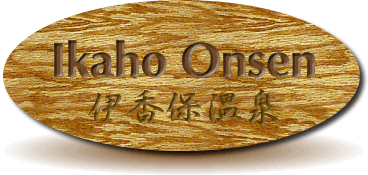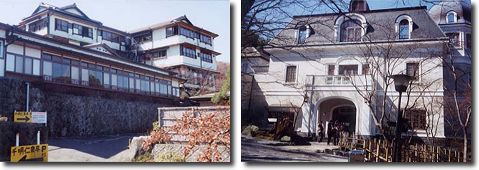|
Ikaho:
An Onsen Town Rich in History, Culture and Ambiance Introduction |
 |
|
|
Ikaho is characterized by its famous “ishidan-gai,’’ or the stone-steps, which are lined on both sides with souvenir shops, inns, food stalls and restaurants. |
||
|
The staircase eventually lead to a dark, old shrine on the top of a mountain, where locals come to pray for good health and safety. Locals told us the steps date back 420 years ago, built to commemorate Ikaho as the first government-established onsen town. It’s obvious people take great pride in the history. The old town feel is well preserved, with many of the narrow, winding side lanes kept in appearance much the way they would have been centuries ago. Their reverence for the hot spring is also evident: small glass cases dot the steps, offering a glimpse of the steamy brown thermal water streaming down the slope. A local town guide traces the original hot spring back some 2,000 years, pointing to an Ikaho citation in the ancient poetry collection of “Manyoshu.’’
|
 |
|
|
This colorful two-tier pagoda at the famous Misawa Temple is said to be very rare, and is a designated national cultural treasure. |
| “The
Backstage of a Meiji Novel” But it wasn’t the stone steps that made the spa town famous. Most of the onsen-goers did not discover Ikaho until the book “Hototogisu,” was published in 1900 by the Meiji novelist Roka Tokutomi. Tokutomi made his first visit to Ikaho in 1898, staying at the historic inn of Chigira Jinsentei, which is still standing today. He was quickly charmed by the town, and began frequenting Ikaho and the ryokan as he wrote the novel. Much of the book’s setting came straight out of Ikaho, although the tale is about the turbulent life of a woman living under the harsh confines of feudal Japan. Today, as you climb the steps, you can almost hear Namiko, the heroine in “Hototogisu,” sighing, “Next life, let me not be born a woman again.” With “Hototogisu”’s backdrop in mind, we chose to stay at Chigira Jinsentei. We were glad we did. The sizable Japanese inn is a pleasing three-story building with a black tile roof, white walls, and a long series of wood-paneled windows. |
|
|
Its
Taisho-era style building stands in striking contrast to the tall, dull
high-rise hotels that crowd the immediate vicinity. The innkeepers told
us Chigira Jinsentei has been around since 1502 and is the oldest inn
still operating in the area. The current structure was rebuilt roughly
a century ago after a fire.
The room we stayed in was on the second floor and was12 tatami mats in size. It also had an enclosed veranda with two rattan chairs overlooking the beautiful mountain range of Mikuni. All 30 rooms at the hotel also have a private toilet and sink. One thing the ryokan has no shortage of is baths. Guests have a choice of two indoor baths – their use is rotated between men and women in shifts – two outdoor baths that are divided between men and women; and four private family baths. I particularly enjoyed the indoor Takenoyu, a cascade bath. The thermal water was reddish brown and is supposed to be good for feminine ailments. |
 The modest previous summer residence of the Minister of the former kingdom of Hawaii is a lovely little museum with a colorful history. It is conveniently located near the base of the town’s stone steps. |
 |
Dinner was another highlight of our stay. We were served grilled fish, tempura, sashimi, a yummy fish-and-vegetable soup, several side dishes of vegetables and a very tender and juicy Gunma beef steak. The staff assured us the beef was local, and free of problems, and it was in fact quite delicious. We spent the following morning exploring Tokutomi’s footsteps at the hotel. Kazuko Chigira, the hotel’s owner, kindly showed us room 386 on the third floor, where Tokutomi spent much of his time writing “Hototogisu.” Chigira said Tokutomi made frequent visits there even after completing the novel. In 1927, when he fell seriously ill, he insisted on moving back to the hotel and renting a bungalow by the main construction site, where he later died. Today, the bungalow is preserved in a nearby commemoration hall (Tokutomi Roka Kinen Bungakukan) devoted to the novelist’s artifacts. |
|
Don’t
forget to drop in the Oosawaya for a bowl of the famous Misawa udon
noodles during your visit to the Misawa Temple. |


